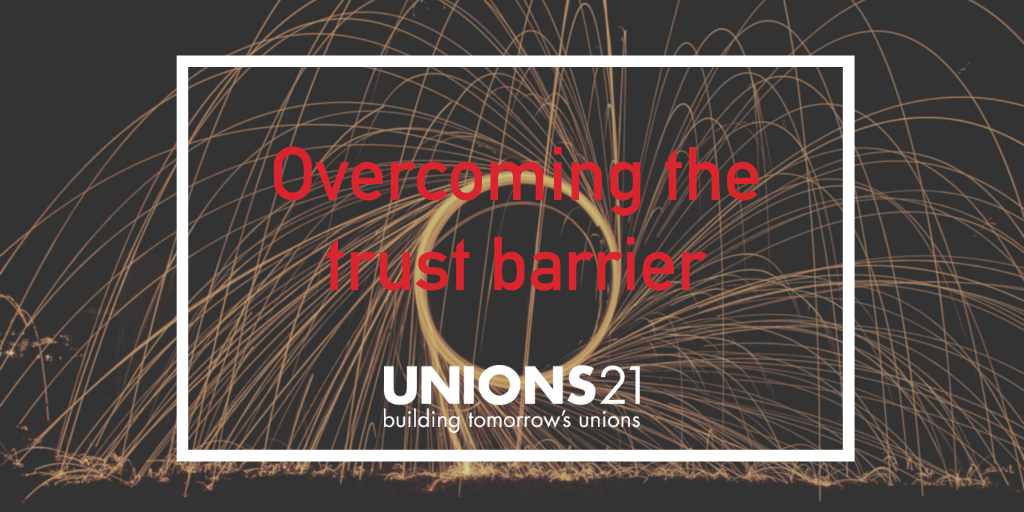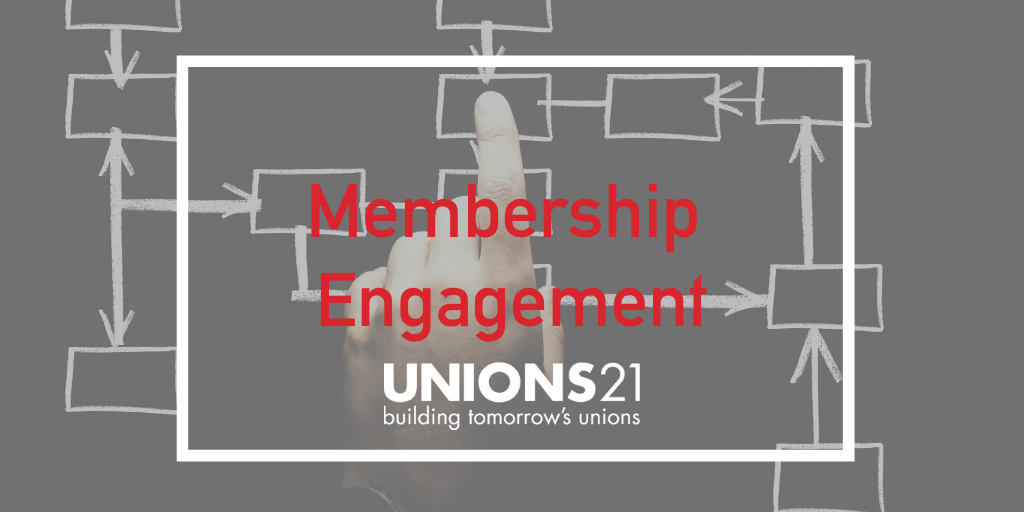By Duncan Robertson, Digital Consultant Unions 21 | 6 min
As a companion piece to Vic’s blog on member engagement from join to renew, in this blog, I’m going to look at how to create and refine a digital strategy to boost engagement.
I’ll focus on a real life example where we worked with Unions 21’s supporter union, Nationwide Group Staff Union (NGSU), to help them do more with their digital estate.
As with any review of operations, we started with NGSU’s overall strategy, thinking about what they wanted to achieve to recruit, retain and engage members and to influence key stakeholders. We also discussed key challenges around time and money to carry out regular social media work, and considered which digital activities would make the most impact on reaching audiences for the least impact on resources.
Our overall approach
Having determined that the website and Facebook were NGSU’s main digital channels to reach members and reps, we agreed three key principles to ensure the website and Facebook were fit-for-purpose tools for delivering the support and advice that recruits and retains members, and reps would find useful in their roles:
members’ engagement with content would be the most important metric for decision-making
insights from the website would inform content creation for social media
we’d look for maximum efficiency in the time invested in analytics and content creation.
Analytics and the baseline
A first step for setting goals and measuring progression is to understand what historical activity tells us.
Union output tends to be cyclical, with peaks and troughs of activity. Look backwards at the metrics over a suitably long period - a year, perhaps - to establish a performance baseline and to ensure any judgements you make about what ‘good’ performance looks like are accurate.
Focus on metrics around the quality of engagement with website pages or social media posts, rather than pure numbers of page views or post impressions.
Consider:
How many of my website visitors return over time? What website sections do they go back to?
How long do they spend reading the page they visit? Do they read the whole page?
How many of the people who see a Facebook post like it or comment on it?
How many of them follow links through to the website?
When they get there, do they click through to other pages? Do they make return visits?
That’s not to say that increased visitor numbers or total monthly impressions should not be used as key performance indicators. But when starting from a low base, almost any new activity will mean more post impressions or website visits.
Engagement metrics are more important because they give insights into how your audience of members and potential members judge the quality of the content you are publishing and sharing.
Engagement and operational output
Once a baseline analysis of website and social media engagement is complete, it’s important to track the performance of new output against these same metrics on a weekly or monthly basis.
A common issue facing small teams is that it’s hard to justify time spent on analytics when there’s so much responsive work to be done. But limited, efficient analysis massively simplifies your work if you lack resources and you’re uncertain about what to focus your time on.
Weekly or monthly reporting on website content engagement statistics allows you to:
identify priority areas for website maintenance, by finding pages where you’ve successfully increased traffic but where engagement is poor
identify great content to be repurposed for social media - if something is working well on your website, there’s a good chance it will do well on social media be that as a link to drive traffic, or as shareable quotes, infographics or other native content.
Equally, understanding what topics and themes are driving engagement on social media can provide a prompt for new website content. Sharing content from other sources about an emerging issue or running snap polls can test your audience’s appetite for a detailed, more resource intensive response.
It’s likely that your audience will respond better to certain kinds of posts on certain topics than others. What are the themes that will always generate 30 or 40 comments on a Facebook post? What kind of image works best to drive traffic to a blog?
Regular engagement reporting makes it easier to discern in advance what your best chances are for success, and to invest scarce resources accordingly.
Lightening the load
Analytics tools like Google Analytics and Facebook Audience Insights are incredibly useful and versatile tools for understanding performance, but they often have a very steep learning curve for new users.
This in turn can make regular reporting of any sort a daunting task, even if it is focused on only a few key metrics and is so beneficial for simplifying content creation.
During the set-up phase, it can be worth investing some time in exploring built-in options to make life easier when it comes to reporting. For example, you can set up dashboards in Google Analytics that focus on the engagement metrics you’ve identified as being the most important.
It’s also possible to identify and categorise the links that you’re interested in through the use of tags. This functionality, intended for keeping track of advertising campaigns, can be repurposed to allow you to separate out the engagement statistics for different areas of activity or themes - recruitment, campaigns, your member benefit programme - and understand more about what works best for generating traffic from social media, email and other media.
On the social media side, paid-for team-working and scheduling tools like Hootsuite, Buffer and Sprout Social have their own built in analytics that aim to simplify and consolidate statistics across different platforms.
Another option - and the one that we’re putting into practice at NGSU - is setting up a report in Data Studio. This free tool from Google allows you to consolidate data from an extensive range of different sources, including Google Analytics and Facebook.
It means we can create a dashboard that focuses only on actionable insights, closely aligned to the digital strategy we’ve created. It’s a single shared resource for both decision makers and content creators, illustrating progress against KPIs and flagging up the best performing (and worst performing) pages and posts in each of the categories we’ve been talking about.
Over time, as the digital strategy grows to include other social media channels and activities, the dashboard can also grow and be adapted to different uses.



